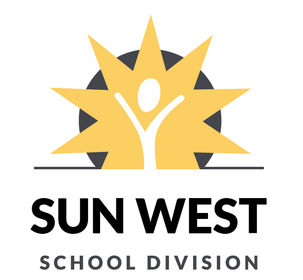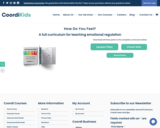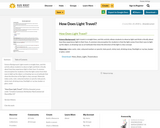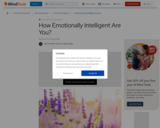
3 Levels of Government game
- Subject:
- Social Studies
- Material Type:
- Game
- Date Added:
- 09/26/2022

Sun West endorsed resources.
Sun West endorsed resources.

3 Levels of Government game

Today we're going to talk about a fundamental part of all modern computers. The thing that basically everything else uses - the Arithmetic and Logic Unit (or the ALU). The ALU may not have to most exciting name, but it is the mathematical brain of a computer and is responsible for all the calculations your computer does! And it's actually not that complicated. So today we're going to use the binary and logic gates we learned in previous episodes to build one from scratch, and then we'll use our newly minted ALU when we construct the heart of a computer, the CPU, in episode 7.

CoordiKids is happy to offer the series of downloadable tools for teachers: The How Do You Feel? Curriculum for teaching self-regulation to children.
How Do You Feel? is a curriculum designed for elementary school teachers. The kit is geared toward helping children ranging in ages from 4-12.
What’s Included: The How Do You Feel? Curriculum from CoordiKids
- The “How Do You Feel?” Chart
- 6 Lesson Plans
- Visual Aids
- Worksheets
- And more!
By clicking on the "Home" tab, you will also find:
- Home Course
- Preschool Course
- Classroom Brain Break Course
- Homeschool Brain Break Course
- Master Classes
- Starter Packs (Sensory Processing and Dyspraxia)

*Icebreakers
*Team building
*Party Games
*Classroom Games
*Board Games
*Card Games

Science Background: Light travels in straight lines, and this activity allows students to observe light and think critically about how they experience light in their lives. A common misconception for students is that the light comes from their eyes to light up the object, so drawing rays as arrowheads that show the direction of the light is a key concept.
Materials: index cards, ruler, coloured markers or pencils, hole punch, sticky tack, drinking straw, flashlight or ray box, beaker or glass, water

Science Background: Sound waves behave in the same way as light and water waves. This activity allows students to “see” sound.
Materials: plastic wrap, small yogurt container, elastic band, 1mL salt, tuning fork, water

An emotional IQ survey.

In this episode we looked at robots and the engineering principles of robots. We learned how robots use sensors to interpret their environment, how actuators and effectors allow a robot to manipulate the objects around it to accomplish a task, and how computers coordinate the efforts of the two.

This webinar will explore best practices around feedback and how it can best be utilized to impact student learning.
Presented by John Almarode, Douglas Fisher, Nancy Frey.

Today we’re going to explain how exchangers...exchange heat. We’ll look at concentric tubes, finned tubes, plate heat exchangers, and shell-and-tube heat exchangers. And we’ll look at some equations to help us sort through heat transfer and decide what heat exchangers are best suited for our designs.

In this lesson, you will learn how to draw a realistic bunny!

In this lesson from Art Hub for Kids, students are shown how to draw a Russian Nesting Doll.

In these YouTube lessons for young children, you start by writing a letter of the alphabet and turn the letter into an animal starting with the letter.
Check out the lessons to see the animals kids can draw from the entire alphabet!

This course is good for anyone over 13 years old!
"The How to Make a Comic Book online course is a project-centered course designed for all-age learners (ages 13+) who are brand new to the comic-making process. The course features a bevy of resources for new comic-makers including tutorials, models, comic industry guest speakers, and exercises.
The course walks participants through the full process of comic creation, starting at brainstorming and covering scripting, thumbnailing, penciling, lettering by hand, inking, and final assembly. The course culminates in the creation of a final 4-page comic."
Enroll in the course and the materials will be emailed to you.
The course is free, self-paced and should take 8-20 hours.

"In this e-mail based course, you will explore essential aspects of project-based learning design while also considering strategies for creating accessible and equitable online project-based learning experiences.
This course culminates in you creating an outline and planner to design and facilitate PBL in online spaces and for distance-learning."
This course is free and email based.
It should take teachers 4-10 hours to complete.
Come out ready to get your PBL rolling!

"The How to Teach Us online course was designed to help K-12 teachers integrate student voice into their classrooms. “How To Teach Us” was named as such because, in an effort to showcase strategies to enhance classroom practices around student voice, three separate documentaries were constructed to coincide with the three weekly themes of the course that specifically follow elementary, middle, and high school students.
The three focus areas for the course were: significant learning, day-to-day routines/schedules, and student-centered assessment practices. The course is designed to be completed over a total of 9 hours of work, with three separate assignments that ultimately culminate in a teacher presentation of learning (POL)."
This course is self-paced and delivered via email.
It will take 4 hours+

So we know that sociology is the study of society, but what exactly *is* a society? Today we’re going to find out. We’ll look at Gerhard Lenski's classification of societies into five types, and the technological changes that turn one into another. We’ll also return to Marx, Weber, and Durkheim to consider how they understood societal change. Finally, we’ll explore Durkheim's concept of social solidarity.

Join Proton the cat as he tests out the professor's newest invention - goggles that allow a person to see sound in addition to hearing it. As you take a tour of the lab, you'll learn all about the science of sound, from how our ears allow us to hear sound, to the differences between louder and softer sounds.
Ever wonder why you can’t hear a dog’s whistle, yet when you use one, all the neighborhood dogs come running? Dogs are able to hear at higher ranges than that of humans.
Sound is a type of energy created by a rapid back-and-forth movement or vibration. When an object vibrates in the air, the air particles move around and cause other particles to move and bump into other particles, which carry the vibration through the air. This sound wave will keep going until it runs out of energy. When your ear is in range of the sound wave (before it loses all its energy) you hear a sound.
Sounds differ from one another because they vibrate at different speeds. This means, how often a sound wave will occur over time, or its frequency. When the vibrations are fast, you will hear a high note, and when the vibration frequency slows, the note will lower. Your ears collect and process the sounds, and then send signals to your brain in response

Aboriginal children under age 14 make up 7% of all children in Canada and the Aboriginal population is the fastest growing demographic in this country. Eighty percent of Aboriginal children attend off-reserve provincial schools. In terms of school success, there are significant gaps in learning outcomes and graduation rates between Aboriginal and non-Aboriginal students.
This site provides many links to articles and resources that discuss this issue and provide examples of how different provinces are striving to close that gap and improve the educational opportunities to help Aboriginal students meets academic success.

Eleven of the ninety-four Calls to Action of the Truth and Reconciliation Commission of Canada (TRC) final report are specific to education. Call to Action 63, “Building student capacity for intercultural understanding, empathy, and mutual respect,” challenges Canadian education systems to focus on students’ understanding of Indigenous human rights and social justice initiatives. Non-Indigenous students are now beginning to learn about the truth of residential schools, treaties and other long-standing issues facing Indigenous communities such as lack of clean drinking water, housing and food shortages. Truth and reconciliation is a spiritual and emotional journey required of all students and educators – from the head to the heart – that will unfold differently for everyone.